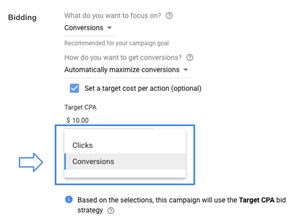Understanding Google Ads: A Comprehensive Guide

Google Ads, formerly known as Google AdWords, is a powerful online advertising platform that allows businesses to promote their products and services to a vast audience. By leveraging the vast reach of Google’s search engine and its network of partner websites, you can effectively target potential customers and drive traffic to your website. In this detailed guide, we’ll explore the various aspects of Google Ads, helping you understand how to maximize its potential for your business.
Creating Your Google Ads Account

To get started with Google Ads, you’ll need to create an account. Here’s a step-by-step process to help you set up your account:
- Visit the Google Ads website and sign in with your Google account.
- Click on “Start now” and follow the prompts to create a new account.
- Enter your business information, including your company name, website URL, and contact details.
- Select your primary goal for running ads, such as increasing website traffic, generating leads, or promoting sales.
- Choose your currency and time zone.
- Agree to the terms and conditions and click “Continue” to create your account.
Setting Up Your Campaigns

Once your account is created, you can start setting up campaigns. A campaign is a collection of ad groups, which in turn contain individual ads. Here’s how to create a campaign:
- In your Google Ads account, click on the “Campaigns” tab.
- Click on the “Create campaign” button.
- Select the campaign type that best suits your goals, such as Search, Display, Shopping, or Video.
- Enter a name for your campaign and choose your target audience, location, and language.
- Set your budget and bidding strategy. You can choose to bid on a cost-per-click (CPC) or cost-per-impression (CPM) basis.
- Click “Save and continue” to proceed to the next step.
Choosing Your Ad Format
Google Ads offers various ad formats to suit different marketing objectives. Here are some of the most common ad formats:
- Search Ads: Text-based ads that appear at the top of Google’s search results when someone searches for relevant keywords.
- Display Ads: Visual ads that appear on websites and apps that are part of the Google Display Network.
- Shopping Ads: Product-based ads that show images and details of your products when someone searches for related products.
- Video Ads: Video ads that play on YouTube and other Google-owned properties.
Optimizing Your Ads
Optimizing your ads is crucial to ensure they perform well and deliver a positive return on investment (ROI). Here are some tips for optimizing your ads:
- Keyword Research: Identify relevant keywords that your target audience is searching for and include them in your ad copy.
- Ad Copy: Write compelling ad copy that highlights the benefits of your product or service and encourages users to click on your ad.
- A/B Testing: Test different versions of your ads to determine which ones perform best.
- Targeting: Use demographic, geographic, and interest-based targeting to ensure your ads reach the right audience.
- Budget Management: Monitor your budget and adjust it as needed to optimize your ad spend.
Measuring Your Results
Google Ads provides detailed reports that allow you to track the performance of your campaigns. Here are some key metrics to monitor:
- Click-Through Rate (CTR): The percentage of people who clicked on your ad after seeing it.
- Conversion Rate: The percentage of people who completed a desired action, such as making a purchase or filling out a contact form.
- Cost Per Click (CPC): The average amount you pay each time someone clicks on your ad.
- Return on Investment (ROI): The overall profitability of your Google Ads campaigns.



